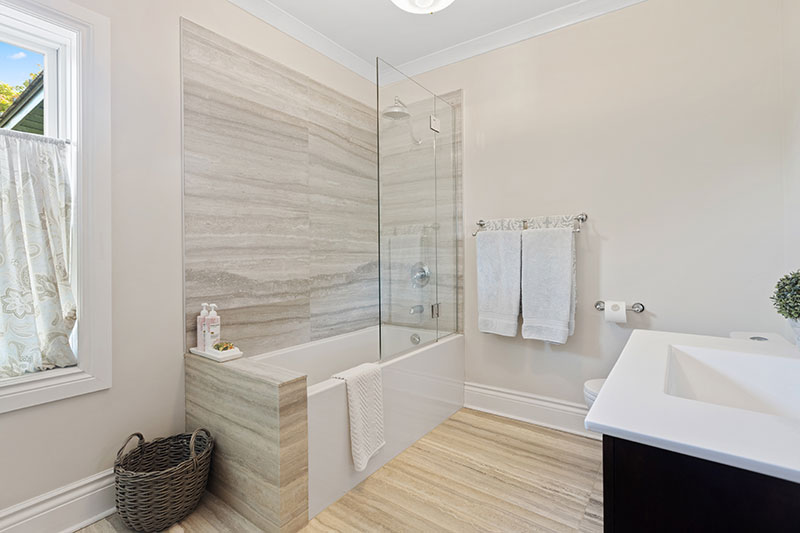Advertisement
Probably the main issue with bathrooms is condensation. Over time, it can lead to cosmetic issues such as peeling paint, mould in between tiles, and dull fittings. However, it can also lead to more serious problems, including dangerous black mould and structural damage, if the water seeps through the walls.
While condensation will always be present in your bathroom, there are some ways of reducing it – here are some top tips to increasing the longevity of your bathroom.
Get an extractor fan
When you shower, or take a bath, it’s inevitable that moisture will enter into the air. What you need to do is try to prevent it from condensing on surfaces. If you don’t already have one, an effective way of dealing with condensation is to fit an extractor fan.
It’ll help suck the moist air out of the bathroom after you’re done using it, massively decreasing the amount that’s left to condense on the walls and ceilings. Opening a window can also help, but it isn’t nearly as effective at creating air flow.
Condensation reducing wall panels
If you’re looking for a long term, effective solution to your damp related woes, bathroom panels can help with condensation. They’re far more water resistant than any kind of paint, and because they don’t have multiple joins like tiles do, you don’t need to worry about any mould building up in the grout. Some panels even have antibacterial coating, that massively reduces bacteria build up that can result from excess moisture.
Bathroom wall panels are also cheaper than tiles, both to buy and to install. They’re easily cleanable, and if you get a flat type, you can simply squeegee excess water off after a shower – more on that next.
Wipe down wet surfaces
While it might seem like a bit of a hassle, wiping down wet surfaces is a great way of minimising the issues associated with condensation. The simplest way of wiping down flat surfaces like glass dividers, mirrors and wall panels is to use a squeegee – a special rubber blade that window cleaners use.
Once you get the hang of it, it’s quite fun – just wipe down flat surfaces after you shower, it shouldn’t take more than 20 seconds. It doesn’t have to be perfectly dry – just not soaking wet.
Cooler showers and baths
The simplest way of avoiding excessive condensation in the bathroom is to take a slightly cooler shower or bath. This results in the air being colder, which means it can’t hold as much water – there’s a reason why hot steam rooms are so steamy.
Obviously, some of us won’t be able to avoid taking scorching hot showers. In this case, even reducing the time you’re in there by a few minutes can make a big difference.
Condensation can develop into serious issues if not taken care of. By following the tips above, you should be able to massively decrease those issues, helping your bathroom last longer.

